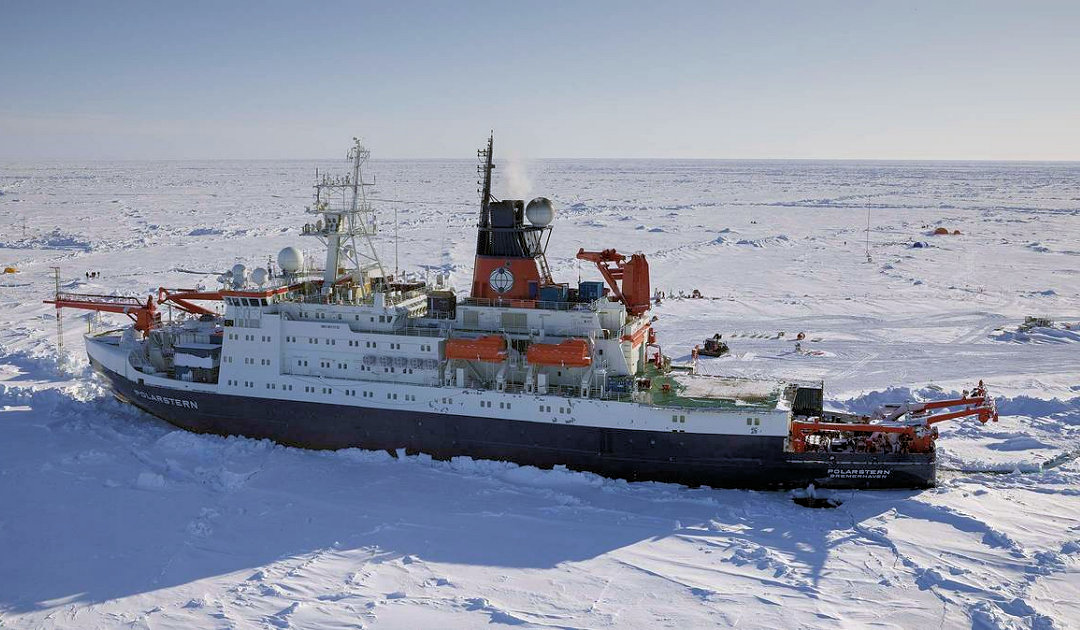
Researchers around the world will get access to the valuable data from the MOSAiC expedition. To make this possible quickly and in a user-friendly way, the Alfred Wegener Institute, together with DKRZ Hamburg and DLR Jena, is developing a series of analysis tools with which first researchers and later the general public can access and work with Arctic data online. The project is being funded by the Federal Ministry of Education and Research for three years with around 2 million euros.
On its return from the far north, the research icebreaker Polarstern brought back a gigantic treasure trove of data, the scientific evaluation of which will probably take years. “Among other things, the focus is on the pressing question of why Arctic sea ice is shrinking so much and what consequences this has for the Earth’s climate,” says project coordinator Dr. Sebastian Mieruch-Schnülle from the Alfred Wegener Institute, Helmholtz Centre for Polar and Marine Research (AWI). “Researchers around the world are therefore very interested in access to the MOSAiC expedition data that is as low-threshold and user-friendly as possible. It is precisely this easy access that we are now creating with the M-VRE project.”

The Federal Ministry of Education and Research (BMBF) is funding the project “M-VRE: The MOSAiC – Virtual Research Environment” as part of the Federal Government’s research programme “MARE:N – Coastal, Marine and Polar Research for Sustainability”. Together with the German Climate Computing Centre DKRZ in Hamburg and the Institute of Data Science of the German Aerospace Center (DLR) in Jena, the AWI will develop a system of online tools over the next three years that will allow researchers from around the world to effectively explore, analyse and visualise MOSAiC data.

One of the tools will be the online version of the well-established “Ocean Data View” software (ODV), which was developed by the AWI and currently has around 10,000 users worldwide. “With webODV, researchers can look deep into the datasets with just a few mouse clicks and have appealing graphics, maps and sections of the ocean output very quickly,” says Sebastian Mieruch-Schnülle. “We rely on interdisciplinarity here. For example, the temperature of the atmosphere is often stored in a different format than the temperature of the ocean water. We will process the data in such a way that an atmospheric physicist, for example, can display and output not only the air temperature, but also the temperature profile of the underlying ocean and the ice thickness at the same time.”
“Initially, researchers from the MOSAiC consortium will have access. In the medium term, however, we want to open up the system to the general public. In this way, interested laypeople will also be able to participate and work on the valuable information from the Arctic, for example in the context of citizen science projects.”
Dr. Sebastian Mieruch-Schnülle, Project Manager M-VRE
The tools provided in the project take into account the different preferences and demands in the scientific community. Those who like to work visually and with the mouse, will use webODV. On the other hand, anyone who does a lot of programming and needs to statistically analyse particularly large data sets will find the right tool in “Data Cubes”, which is being developed at DLR Jena. To ensure that this also functions smoothly with very large numbers of users, DKRZ Hamburg will create a corresponding systemic substructure (back-end) in cooperation with the AWI computer centre.
“The tools are provided on a common dashboard and enable a wide variety of scientific disciplines and professions to access the MOSAiC data in a suitable way,” explains Sebastian Mieruch-Schnülle. “Initially, researchers from the MOSAiC consortium will have access. In the medium term, however, we want to open up the system to the general public. In this way, interested laypeople will also be able to participate and work on the valuable information from the Arctic, for example in the context of citizen science projects.”
Press Release Alfred Wegener Institute AWI
More on the subject:





